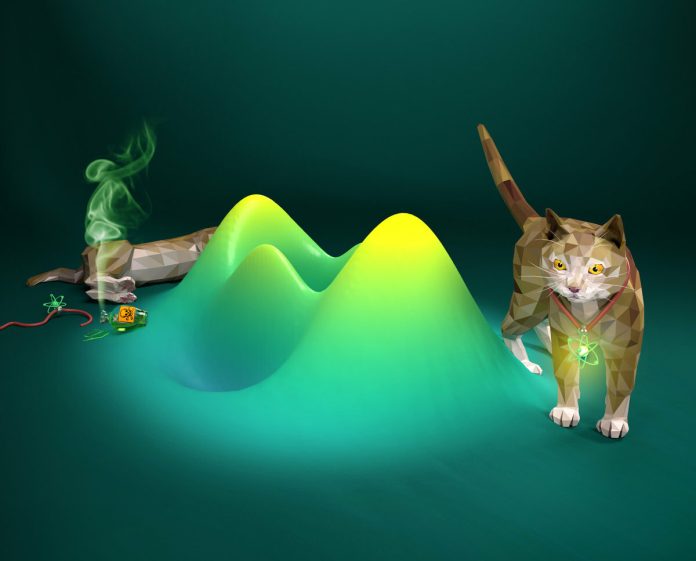Schrödinger’s cat is a famous mental exercise that was designed to explain the potential of an atom or molecule being able to occupy two or more quantum states at the same time. Physicists from the University of Bonn in Germany and the University of Hull in Britain have succeeded in proving that a single atom can occupy two spaces at the same time. This discovery solves the Schrödinger’s cat postulation for a single atom and was reported in the edition of the journal Physical Review X.
The researchers forced a single cesium atom to occupy two positions in space by pulling the atom in two different directions at the same time with sufficient magnetic force to produce two quantum states for a single atom. The measurements indicate that the atom did occupy two places at the same time. This verifies the long held theory of quantum mechanics.
The objective of the experiment was to prove that the same quantum mechanical properties apply to all objects not just atoms. One of the conundrums of quantum theory is the inability to produce two different states and positions in space for an object larger than an atom. Theoretical possibilities include other dimensions. The distance that the experiment separated the single cesium atom by is not considered to be far enough apart to disprove present quantum theory.
The experiment does present the potential for disproving the relevance of quantum mechanical theory as applied to objects in the real world. The experiment did show that a single atom can occupy two positions in space at the same time. The researchers cannot determine if the two positions are a superimposition of two quantum mechanical states. The interference of the observing tools with the object being observed is still intact although the famous cat has been let out of the box in one sense at least for single atoms.








